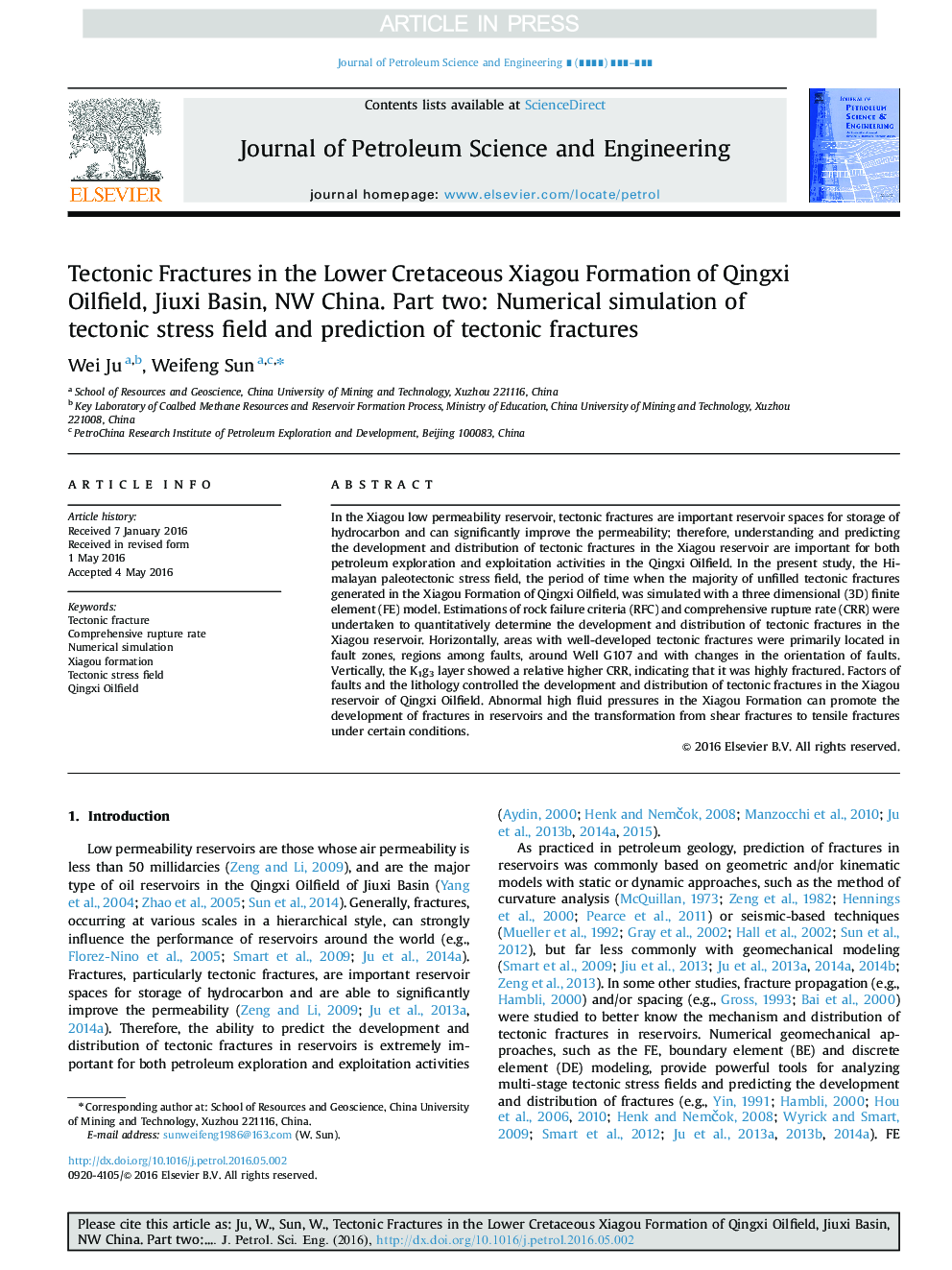| Article ID | Journal | Published Year | Pages | File Type |
|---|---|---|---|---|
| 8125935 | Journal of Petroleum Science and Engineering | 2016 | 11 Pages |
Abstract
In the Xiagou low permeability reservoir, tectonic fractures are important reservoir spaces for storage of hydrocarbon and can significantly improve the permeability; therefore, understanding and predicting the development and distribution of tectonic fractures in the Xiagou reservoir are important for both petroleum exploration and exploitation activities in the Qingxi Oilfield. In the present study, the Himalayan paleotectonic stress field, the period of time when the majority of unfilled tectonic fractures generated in the Xiagou Formation of Qingxi Oilfield, was simulated with a three dimensional (3D) finite element (FE) model. Estimations of rock failure criteria (RFC) and comprehensive rupture rate (CRR) were undertaken to quantitatively determine the development and distribution of tectonic fractures in the Xiagou reservoir. Horizontally, areas with well-developed tectonic fractures were primarily located in fault zones, regions among faults, around Well G107 and with changes in the orientation of faults. Vertically, the K1g3 layer showed a relative higher CRR, indicating that it was highly fractured. Factors of faults and the lithology controlled the development and distribution of tectonic fractures in the Xiagou reservoir of Qingxi Oilfield. Abnormal high fluid pressures in the Xiagou Formation can promote the development of fractures in reservoirs and the transformation from shear fractures to tensile fractures under certain conditions.
Related Topics
Physical Sciences and Engineering
Earth and Planetary Sciences
Economic Geology
Authors
Wei Ju, Weifeng Sun,
